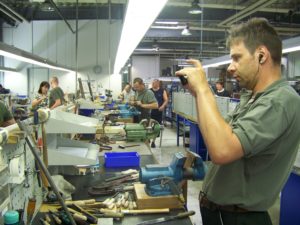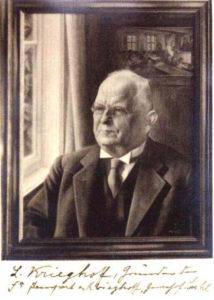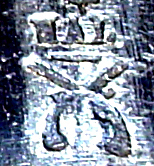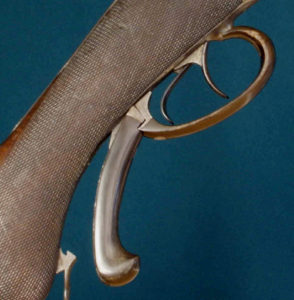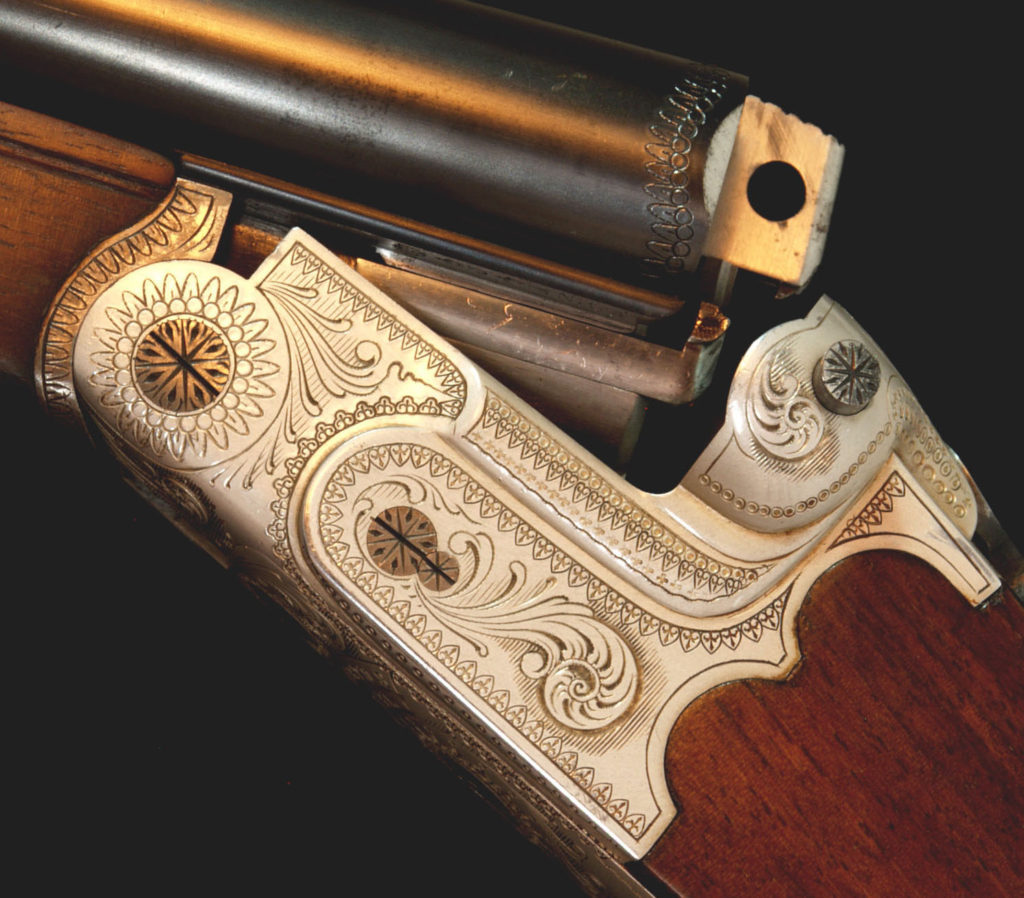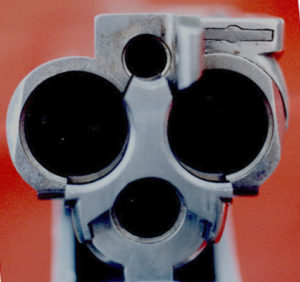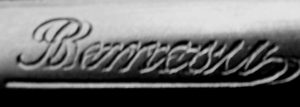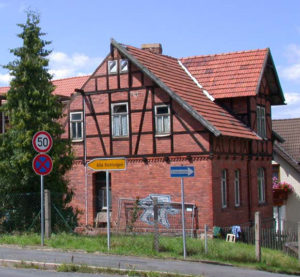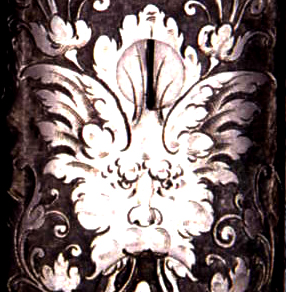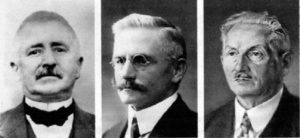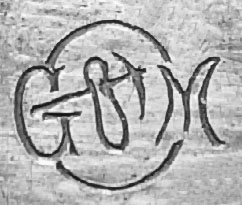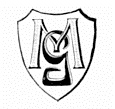German Gun Makers & Dealers K-O
Gun Manufacturers – Gun Makers and Engravers
Gun Dealers and Gun Shops
both former and today’s in alphabetical order.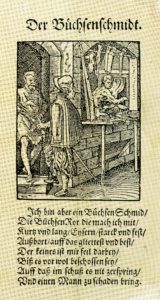
Former Gun Manufacturers, Gun Makers and Engravers, Gun Dealers and Gun Shops
that made or sold German Hunting Guns
| It is not easy to decide when a gun maker becomes a gun manufacturer. Most of the bigger gun manufacturers had their beginning as small shops with a few gunsmiths and stock makers that bought raw components from factories and had work done by other shops that specialized in certain work. It is also difficult to be sure of who actually made a gun, because the name on the gun might be that of the dealer who sold the gun and either bought or ordered it from a gun maker.
Most gun dealers had their own gun shops mostly for doing repairs, but bigger ones also finished partly finished guns that were purchased from other gun makers in Germany, Belgium and other countries and even England. The major manufacturers had their own engraving departments that also trained new engravers. Some of the more experienced engravers had their own shops next to or in their homes and did the more elaborate engravings for the factories. Unfortunately, not even the master engravers who did the most elaborate engravings were allowed to sign their work, and identifying the engraver on an older gun is very difficult if not impossible. It must also be mentioned that most of the older German hunting guns had some engraving, even on the least expensive models. |
Today’s Gun Makers, Engravers and Dealers of German Hunting Guns
Most of the traditional bolt-action rifles and combination guns are still made today, but the following changes and trends are apparent:
Prices of German factory made guns are in general higher than equal models in the United States but usually offer more custom features. Guns made to order by some factories and the smaller makers are as a rule quite expensive, but not nearly as pricey as best English guns.
Bolt Action Rifles made in the bigger factories have mostly switched to designs that have the bolt lock directly into the breech end of the barrel, a design that was patented by Louis Schlegelmilch at the Spandau Arsenal in 1889. This design makes it possible to quickly install a barrel in a different caliber, on some without the use of any tools. These rifles are also very suitable as takedown rifles that today’s world traveler appreciates.
Very fine custom-built bolt-action rifles are available from various smaller makers that cater to all wishes a customer might have. Most use Mauser 98 type actions, but declining numbers of military surplus actions. Instead, they tend to choose reproduction Mauser actions with custom features like square bridge receivers, hinged floor plates, three position side-swing safeties and a great variety of scope mounts, including the German claw mounts. They are made for the lightest to the very heaviest big bore calibers.
New safeties and triggers for bolt action rifles are designed for greater reliability, where wing safeties are locked in the safe position and single set-triggers un-cock themselves when the bolt is opened. One of the latest designs has a separate cocking mechanism built into the bolt that allows the rifle to be carried in an un-cocked condition and cocked quickly when ready to shoot.
Drillings and Combination Guns are still available in the various barrel configurations of the older German guns. However, there is considerable improvement in strength of the actions and barrels through the use of modern steels, allowing heavy magnum calibers. Old and proven strong locking devices that were very expensive in the good old times have been re-discovered and can be produced more economically on modern computer-controlled machining centers.
A big bore African caliber can now be combined with a 3”-20 Ga, shotgun barrel, giving the dangerous game hunter an additional shot with a rifled slug that has stopping power. Many of the trigger mechanisms are now much safer because of the separate cocking features. Another major improvement are floating rifle barrels.
The owners of traditional, older guns know that the impact of the rifle bullet will climb as the rifle barrel on a soldered barrel assembly gets hot. A floating rifle barrel on modern Drillings prevents this. A built in regulating mechanism at the muzzle of a double rifle Drilling makes regulation and re-regulation a whole lot easier and will not require rebluing of the barrels. It must be said, however, that the appearance of some modern Drillings when compared to the old timers has suffered, but beauty is in the eye of the beholder.
Vierlings are still made but are hard on your pocket book. They usually give you an additional small caliber rifle barrel that is located in the top rib or between the shotgun barrels. The lock mechanism is much more complicated, weight must be a consideration and the use of an aluminum receiver might be advisable, except for very heavy calibers.
Double rifles are offered by the Blaser, the Heym and the Krieghoff Companies and by the few remaining small makers in Suhl. Better steel, stronger locking mechanisms, barrel regulation devices and separate cocking mechanisms make these guns very practical and reliable for the big game hunter. The Ziegenhahn Company in Zella-Mehlis can build a fine box lock or side lock double rifle that compares very favorably with the best made in the world.
Traditional German over and under shotguns are still made in the traditional way by the Merkel company and by a few small makers in Suhl, using the Kersten locking mechanism and minor improvements.
Max Ern makes over and under guns with a unique rising bite bolting system.
The Krieghoff K-80 over and under shotgun, developed and improved from the Remington Model 32, has captured a great following for use in the field, for skeet, trap and sporting clays. The Krieghoff Company also offers a custom round action side lock shotgun in various calibers that found instant acclaim.
Merkel makes a wide selection of traditional side-by-side and over and under shotguns, both as box lock or side lock guns in various grades, models and calibers.
When it comes to Air Rifles, German-made rifles win most medals in international competition, including the Olympics. Hartmann & Weiss and Schilling make single shot rifles on falling block actions.
| Abesser & Merkel, formerly in Suhl
Adamy in Suhl Adolph, Fred formerly in USA AKAH – Kind in Hunstig, Germany Ansorg, formerly in Zella-Mehlis Barella, formerly in Berlin-Germany Bartels, formerly in Zella-Mehlis Behr, Burkard & Behr’s Waffen-Werke of Bremen & Suhl Bock, Otto- Berlin Brenneke Guns and Ammunition BÜHAG, Bühag (Buehag) Cooperative in Suhl Daly, Charles in New York Dreyse, Nicholaus von Dreyse and sons Ern, Max in Leverkusen,-Germany Eyring in Suhl Förster –W. Foerster in Berlin Frühauf, Hendrik in Breitenbach near Suhl Funk, formerly in Suhl Greifelt in Suhl Gründig, Carl in Dresden Hagn, Martin in Cranbrook-Canada Hartmann & Weiss in Hamburg-Germany Heym, Friedrich Wilhelm in Suhl, Münnerstadt, Gleichamberg Jaeger, Franz formerly in Suhl |
Jaeger, Kurt formerly in Suhl and Mainz
Jaeger, Paul formerly in Jenkintown, Pa. Kersten, Gustav in Strassburg Kettners, Eduard & Franz Kind in Hunstig, Germany Krieghoff, in Germany and USA Kuchenreuter, A Gunmaking Dynasty Lindner, H.A. in Suhl Meffert, Imman. in Suhl Merkel, Bernhard in Suhl Merkel, Ernst August in Suhl Merkel, Oskar in Suhl Merkel, Paul Ernst in Suhl Merkel Brothers (Gebrüder Merkel) in Suhl Oberhammer, Peter of Munich Prechtl in Birkenau-Germany Rasch, George L. & Christof W. in Braunschweig Reeb, J.J. Reeb Company in Bonn Rempt, formerly in Suhl Sauer, J.P. & Co. formerly in Suhl Sauer, J.P. in Eckernförde and Isny Scherping, Heinrich- Hannover Schilling in Zella-Mehlis Schiwy, Ludwig in Berlin Simson Suhl-BSW-WAFFA-Gustloff Werke Stendebach, C.F. in Germany Stiegele, formerly in München, Germany Steigleder, Ernst of Berlin & suhl Thieme & Schlegelmilch, formerly in Suhl Willig in Schweinfurt, Germany Ziegenhahn, formerly in Suhl, now in Zella-Mehlis |
In the alphabetical list that follows we combine the listings of German Breech Loading Hunting Gun Makers and Dealers, both former ones as well as those still in business today. This list will eventually be very long, especially the one about former Gun Makers. We will concentrate our efforts on those makers and dealers where good information is available.
To find a dealer or gun maker by first name or company name, scroll down through the alphabetical listings.
To open additional information, articles and photos in our archive about a certain maker or dealer, click on Archive.
Stop back to see new listings that will be added as quickly as we can and as new information becomes available. Additions and corrections are welcome. We do not have the time to answer many inquiries and suggest that you first patiently try to find answers in this website.
Scroll Down on Alphabetical List of Gun Makers – Manufacturers – Dealers
K to O
Kersten, Gustav– Armorer, Inventor and Manufacturer of Strassburg.
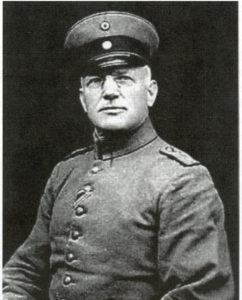 Gustav developed the Kersten or StrassburgerVerschluss which was manufactured by the firm Vierordt & Cie in Kehl. His sister Pauline married Franz Jäger Senior and Gustav was influencial in four of her five sons becoming active in the Suhl Firearms trade. Most notable of these was Franz Jäger Junior who became a well known Gunsmith, Inventor and Manufacturer.
Gustav developed the Kersten or StrassburgerVerschluss which was manufactured by the firm Vierordt & Cie in Kehl. His sister Pauline married Franz Jäger Senior and Gustav was influencial in four of her five sons becoming active in the Suhl Firearms trade. Most notable of these was Franz Jäger Junior who became a well known Gunsmith, Inventor and Manufacturer.
For more about Gustav and his accomplishments go to Gustav Kersten.
Kettners, Eduard & Franz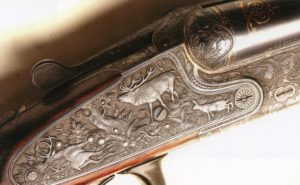
The firms of Franz Kettner and Eduard Kettner were seperate concerns even though they originated from a common family liniage and both had shops and stores in Köln and in Suhl. The family roots go back to the 17th Century and two brothers Sebastian and Franz Josef Kettner who were both Foresters. For more information about The Kettners and thier products go to the Kettner Archive page.
Germany:
Suhl: Sempert & Krieghoff, H. Krieghoff Waffenfabrik
Ulm: Krieghoff Jagd- und Sportwaffen GmbH
U.S.A.:
Krieghoff International in Pennsylvania
Very few prominent German gun makers and gun manufacturers have survived to this day and among them is the Krieghoff Company, formerly in Suhl but now in Ulm and in the United States. The 127 year history of the many Krieghoff family members and the Krieghoff Company is an interesting one, but too long and complicated to report all of it.
Ludwig Krieghoff Sr. and a Mr.Sempert founded the Sempert & Krieghoff Company in 1886 in Suhl. Although Sempert went to America shortly thereafter, the company name was retained for many years. Ludwig Krieghoff was an accomplished gunsmith, as were most of the ones that followed him, but as a lawyer Heinrich Krieghoff helped the company to become very successful. From its founding the company concentrated their efforts on a great variety of hunting and sporting guns of the types that Suhl became famous for, but the Drilling (triplet), a three barrel gun that was very popular in continental Europe became their recognized specialty. As the Merkel Company in Suhlhad built their reputation with their over and under shotguns, Krieghoff built it with their Drillings.
To read the complete history of the company and descriptions of their guns, go to the Photo Gallery Archive and the text Archive.
Kuchenreuter, a family Gun Making Dynasty
The occupation of Gun Making among the Kuchenreuter family began around 1695 when Johann Christoph Kuchenreuter married the widow of a Gun Maker named Wilfing and took over that business. Twenty eight descendents of Johann Christoff have carried on that gunmaking tradition. For more information on this family and thier products go to the Archive page titled Kuchenreuter Gun Making Dynasty.
H.A. Lindner in Suhl
Gun Maker of the Prussian Daly Guns
If you asked a well informed American gun collector or user for the best German gun, the answer will most likely be the Prussian Daly guns made by Lindner. If, on the other hand, you asked an informed person in Suhl where Lindner was located, they might be hard up to know anything about this gun maker. How can this be? One reason is that Lindner had a very small gun shop where only a few skilled gunmakers worked and the fact that Lindner stopped making guns at the beginning of World War I in 1914, closed his business in 1918 and retired.
He was what would be called a “Rucksack Büchsenmacher” that carried guns in various stages of completion in a backpack to skilled craftsmen who worked in the shops that were usually attached to their residence. Most of them, but not all of them, were highly skilled craftsmen in their chosen specialty, like barrel makers, lock makers and stock makers. Other shops specialized in polishing, bluing and color case hardening. The machined gun components were made in the major gun factories. Some of the best and most experienced engravers left the bigger factories as they got older and worked in their own shops attached to their house.
Lindner had the good fortune that Charles Daly in New York City, who already imported guns from Sauer and other Suhl gun makers, discovered Lindner and found in him a small maker who made the guns to his specifications in the best quality that could be had. These guns could compete with the best English guns that were made in London and Birmingham. Although they did not have side-locks but box-lock actions, they were just as safe because they had interceptor sears like on side-lock guns. Most of all they were just as light and slim and had the same handling qualities.
Sauer and other Suhl gun makers, discovered Lindner and found in him a small maker who made the guns to his specifications in the best quality that could be had. These guns could compete with the best English guns that were made in London and Birmingham. Although they did not have side-locks but box-lock actions, they were just as safe because they had interceptor sears like on side-lock guns. Most of all they were just as light and slim and had the same handling qualities.
The signatures on the right were under a document as founders of a Gun Makers’ Association and shows that Lindner at the time was recognized among other famous makers like Sauer, Schilling, Funk, Merkel and others.
Thanks to the permission by the publisher and the wife of the author, two articles that originally appeared in The Double Gun Journal and were researched and written by Hans Pfingsten tell the Lindner story in great detail, and you will find them in our Linder text and Photo Gallery Archive .
Thanks to some of the owners of Daly guns and to Julia Auctions who allowed us to use their photos and show pages from the auction catalogs, a 33 page Gallery of Lindner and Daly Photoswith excellent descriptions can be found in our Photo Gallery Archive.
A list of articles related to German guns that appeared in The Double Gun Journal can be found in our Trade Mark & Bibliography Archive.
Imman. Meffert Gewehrfabrik in Suhl 1838-1985
Saint Hubertus was the patron of the hunter in the German Hunting Tradition and “Hubertus” was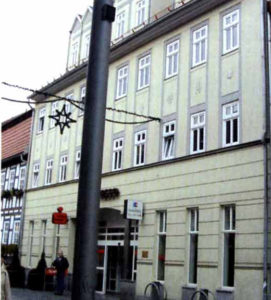 chosen as the Meffert trademark. The company was founded by Georg Immanuel Meffert with his sons Justin and Richard. Justin’s son Bruno took over in 1934 and Bruno Meffert’s son Georg Meffert after World War II .
chosen as the Meffert trademark. The company was founded by Georg Immanuel Meffert with his sons Justin and Richard. Justin’s son Bruno took over in 1934 and Bruno Meffert’s son Georg Meffert after World War II .
Several Mefferts listed as gun makers can be found in the chronic of Suhl as early as 1606, among them the gun lock maker Jacob Meffert in 1832 and the master engraver Friedich Meffert in 1835.
In 1839 the gunsmith Georg Immanuel Meffert founded his company that was located at Steinweg 17, still the main shopping district of Suhl. The stately house shown on the right was a residence in the front and had the business offices and shops in the rear. Over the years additional shops were added in the back of the house. The building is now occupied by a bank since 1985.
An existing small factory next to the Sauer factory grounds at Amtmannsweg 9 (shown on the
 right) was bought in 1901. Here a separate branch of the company made the gun components in the spacious machine shops and made the yearly production of many guns possible.
right) was bought in 1901. Here a separate branch of the company made the gun components in the spacious machine shops and made the yearly production of many guns possible.
In the early years the company made Pinfire guns, followed by hammer guns with the Roux under-lever and then with top levers. Like most Suhl gun makers they offered a great variety of hunting guns, as well as target rifles and pistols. In 1912 they came out with the model “Treff” that had a unique firing mechanism, followed by Drillings with Dural Aluminum Actions and in 1934 Vierlings also with Aluminum Actions.
Up to the beginning of World War II the company prospered but then had to switch over to war production. At the end of the war Suhl was occupied for several months by the American Army but then turned over to the Russian Army, followed by a Communist Government. Georg Meffert who had been drafted into the German Army took over what was left of the company when he returned from a Russian prisoner of war camp. With 15 remaining workers he produced shotguns that mostly went to Russia as war reparation up to 1959. Due to the constant harassment by the Communist police he one morning locked the doors, left Suhl and was able to reach the western part ofGermany over the blockaded Berlin. He found employment at the AKAH Company, an important gun distributor that had formerly sold Meffert guns and is still in business today.
The Company was now taken over by the state and no longer the property of the Meffert family. It
was completely closed down in 1985.
Besides the many different models that were made by most gun makers in Suhl, the Meffert Company made two models that were uniquely theirs. One was the Selbstspanner-Doppelflinte-Hubertus with a grip safety as shown on page 12 and 13 of the Meffert Catalog that you will find in our Archive (Nr.114-T).. The gun could not be fired unless a lever under the grip was pulled tightly against the grip. Although this made the gun much safer, it never seems to have found many buyers because we have heard only of very few. An article about this gun can also be found in the same Archive(Nr.113-T) and also additional articles.
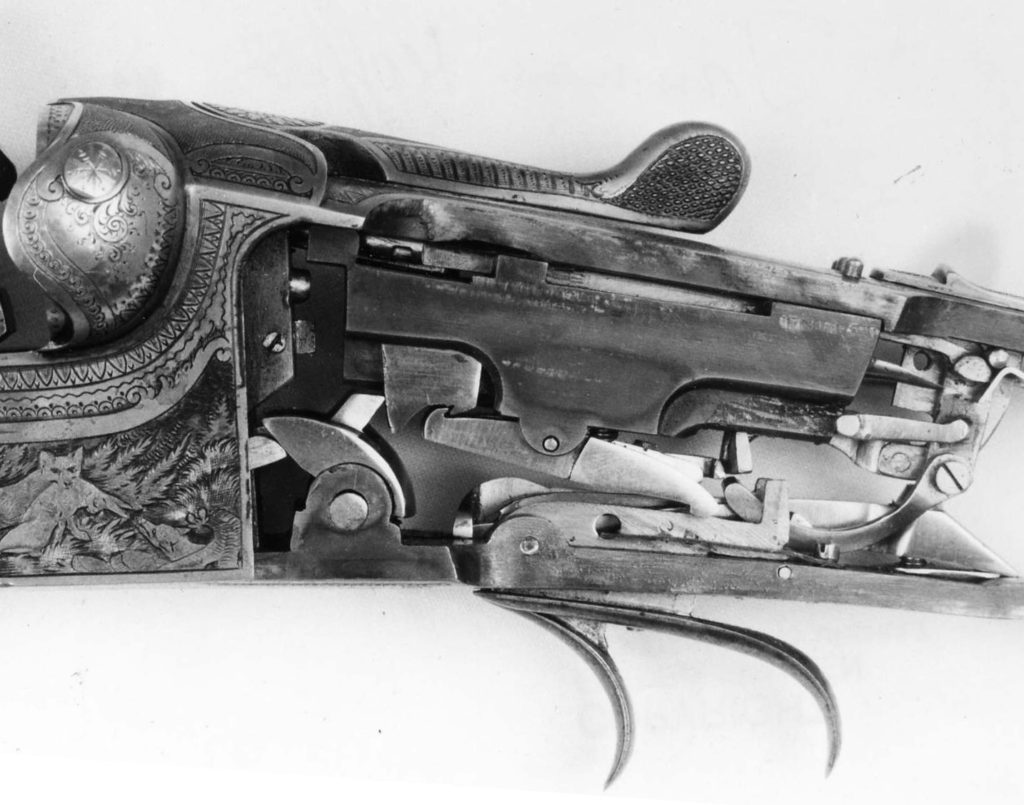
The Hubertus-Drilling-Marke-“Treff”- shown above- came out in 1912 is the second very unique Meffert gun with a firing mechanism in which the firing pins and coil springs are located in a housing under the top strap that also contained the sears. A better photo than the one on the right can be found in a Photo Gallery in our Archive (Nr.56-PG). Other than this the Drilling had identical features as all other Drillings made by Meffert, but it also did not become very popular, was costly to produce and was replaced by the “Blitz” trigger plate firing mechanism. It was discontinues in 1929.
The most popular Meffert guns were the Drillings with a “Dural” Actions that came out in 1934. The word Dural was the trade mark of Düren Aluminium, a company that was in the forefront of developing high grade Aluminum for aircrafts. Although Meffert was not the only company in Suhlthat offered guns with Aluminum receivers, they were the most successful in their marketing of Drillings and Vierlings (four barrel guns) with Dural actions. They directed their efforts towards the German Förster (forest wardens) who all carried a Drilling and appreciated a gun of less weight. The advertised weight of the Drilling was 3 kg (6 pounds),
The argument whether this was prudent and really necessary continues to this day, but there is no doubt that these guns were very popular. Georg Meffert told me in a letter that 1000 Drillings and 100 Vierlings a year were produced before 1939. He also mentioned that the Burgsmüller Company gained an advantage in 1938 when they moved the small caliber rifle barrel from the top rib to the center, making it possible to have the automatically erecting rear sight when a rifle barrel was selected.
On early Drillings the actions were either left in the Aluminum color or coated with a black lacquer. Later models had black anodizing after a process had been developed.
Merkel Gun Makers in Suhl
Twenty one gun makers that have made guns in Suhl between 1800 and 1950 are listed on the 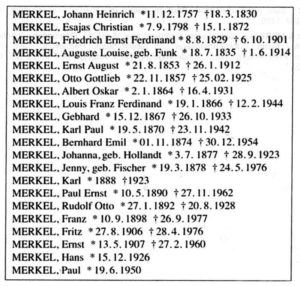 right. Some had their own company, others worked in other Companies in Suhl. Quite a bit of information comes from the book “Gebrüder Merkel – Die Jagdwaffe in meinen Händen” by Dr, Hans-Jürgen Fritze. Unfortunately, the book is only available with German text. If one of you is seriously interested in the Merkel history and can manage the German text or have somebody who can help you with translation, you can order the book from Deutsches Waffen Journal for 20 Euro
right. Some had their own company, others worked in other Companies in Suhl. Quite a bit of information comes from the book “Gebrüder Merkel – Die Jagdwaffe in meinen Händen” by Dr, Hans-Jürgen Fritze. Unfortunately, the book is only available with German text. If one of you is seriously interested in the Merkel history and can manage the German text or have somebody who can help you with translation, you can order the book from Deutsches Waffen Journal for 20 Euro  . Except for the very good information about the Merkel Brothers, we only have some information about four other Merkel gun companies, of which two of them had more than one owner. It is difficult to untangle the relationships of all the Merkels, and some of the information that follows might not be complete or might not be accurate.
. Except for the very good information about the Merkel Brothers, we only have some information about four other Merkel gun companies, of which two of them had more than one owner. It is difficult to untangle the relationships of all the Merkels, and some of the information that follows might not be complete or might not be accurate.
Bernhard Emil Merkel, a son of Friedrich Ernst Ferdinand, founded a Company at Wolfsgrube 16 (in Suhl) at an unknown date at the turn of the century. The Gun Company Bernhard Merkel is taken over by a son Fritz (1906-1976), one of the three children. All kinds of hunting and sporting guns of solid construction and execution were produced. This is also the case during the war years 1939 to 1945. It is not known whether parts for military guns were made, but this was most likely the case. The hunting guns were unsurpassed in quality and handling qualities. Bernhard was himself a hunter. The guns were marked with the B. Merkel Suhl signature. Among others Bernhard Merkel made guns for the Companies Barella, Genschow, Kettner, Kind and Mauser as well as for individual customers. To accommodate the owners and friends in these companies they also performed repairs on handguns.
By 1930 the company had approximately 12 employees. After 1945 Bernhard and his son Fritz (1906-1976) who had returned from a prison camp, worked as gunsmiths together with a stock maker for the Gun Makers’ Cooperative BüHaG into the 1970s.
In the Photo Gallery in our Archive (Nr.7-PG) you will find photos of a nice Berhard Merkel gun with a clam shell action and of the Merkel house that was built early in 1900 with several shop additions that were completed by 1906. The newspaper article reports about the demolition of the house and the shops with regrets that the well built half timbered brick house was not saved.
E. A. Merkel — Gewehrfabrik –
Ernst August Merkel (1853-1912) founded a Gun Making Company and employed two of his brothers. We have no additional information about this gun maker but you will find good photos and a description of one of his double rifles and a Drilling action in our Archive (Nr.131&132-P).
This company was founded in 1908 by Oskar Merkel (1864-1931), Judithstr.60 in Suhl. He was a neighbor of Ernst Steigleder and did business with him and also with Bernhard Merkel who lived nearby and with Gebrueder Merkel. The Oskar Merkel Company at Schlageterstrr.60 in Suhl made mostly Shotguns and Drillings. In 1914 Albert Oskar Merkel and his wife were listed as owners. The ownership changed to Paul and Franz Merkel (1898-1977) his sons. By 1930 Paul Merkel became the sole owner and continued the business through the end of World War II in 1945. In 1925 Udo Anschütz in Zella-Mehlis took his son-in-law, Franz Oskar Merkel, into his company and later took over the Anschütz business and continued it under his own name.
An interesting over and under Double Rifle made by Oskar Merkel can be seen in our Archive(Nr.34-PG).
Paul Ernst Merkel
(1890-1962) was the first son of Albert Oskar Merkel and had worked in his father’s shop since its founding and continued after his father passed away in 1931. The company employed the stock maker Franz Götz.
Merkel Brothers
Gebrüder Merkel – Waffenfabrik Gebrüder Merkel
Albert Oskar – Gebhard – Karl Paul
(1864-1931) (1867) -1933) (1870-1942).
The Merkel Company is the only major gun maker that survived in Suhl during the hard years after World War I, the Recession that followed the war, the world wide Depression that began with the stock market crash in New York in 1929, the Hitler years andWorld War II (1933-1945), a short occupation by American troops, the end of World War II, the occupation by Russian troops and finally the years behind the Iron Curtain under a Communist Government.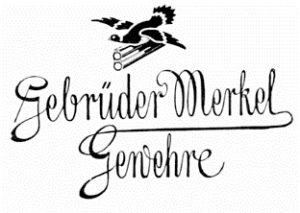
The name Merkel remained with the Company through all the years, but the ownership changed several times. The production methods have changed, some gun models were discontinued and new models were added, but the quality of all their guns remains the same. Many of the older models are still available with some new features but the same quality on which the Merkel family built their reputation.
The history of the Merkel Companies is material for a sizable book and we can only report a small
portion of it for those who own a Merkel gun or will consider acquiring one.
Although Gebrüder Merkel made many different types of guns, the Over & Under Hunting and Sporting Guns with the bolting system invented by Gustav Kersten (double Greener) built and maintained their high reputation to this day.
To read the complete history of the company, and descriptions of their guns, go to the Text Archive and the Photo gallery Archive.
New York Importers – Dealers – Gunsmiths
Some of the most important importers were located in New York City.
Names like Charles Daly, Abercrombie & Fitch, Sloan’s and Griffin & How come to mind.
For a more complete list of these importers and dealers, see our Archive.
Oberhammer, Peter of Munich 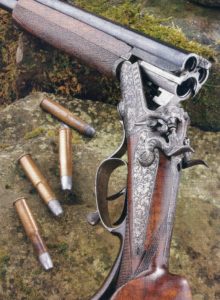
Peter was born in 1838 and started his own business in Munich about 1873. He and his son Ludwig were very interested in repeating combination guns and Pater held several patents that covered variations of these. One was a break action with a repeating Lever action and another was break action with a repeating bolt action. He also made bolt action combination guns with a rotating shotgun barrel below the rifle barrel. To see more on Peter and his guns go the Archive page by clicking on the following- Oberhammer, Peter – Munich.


